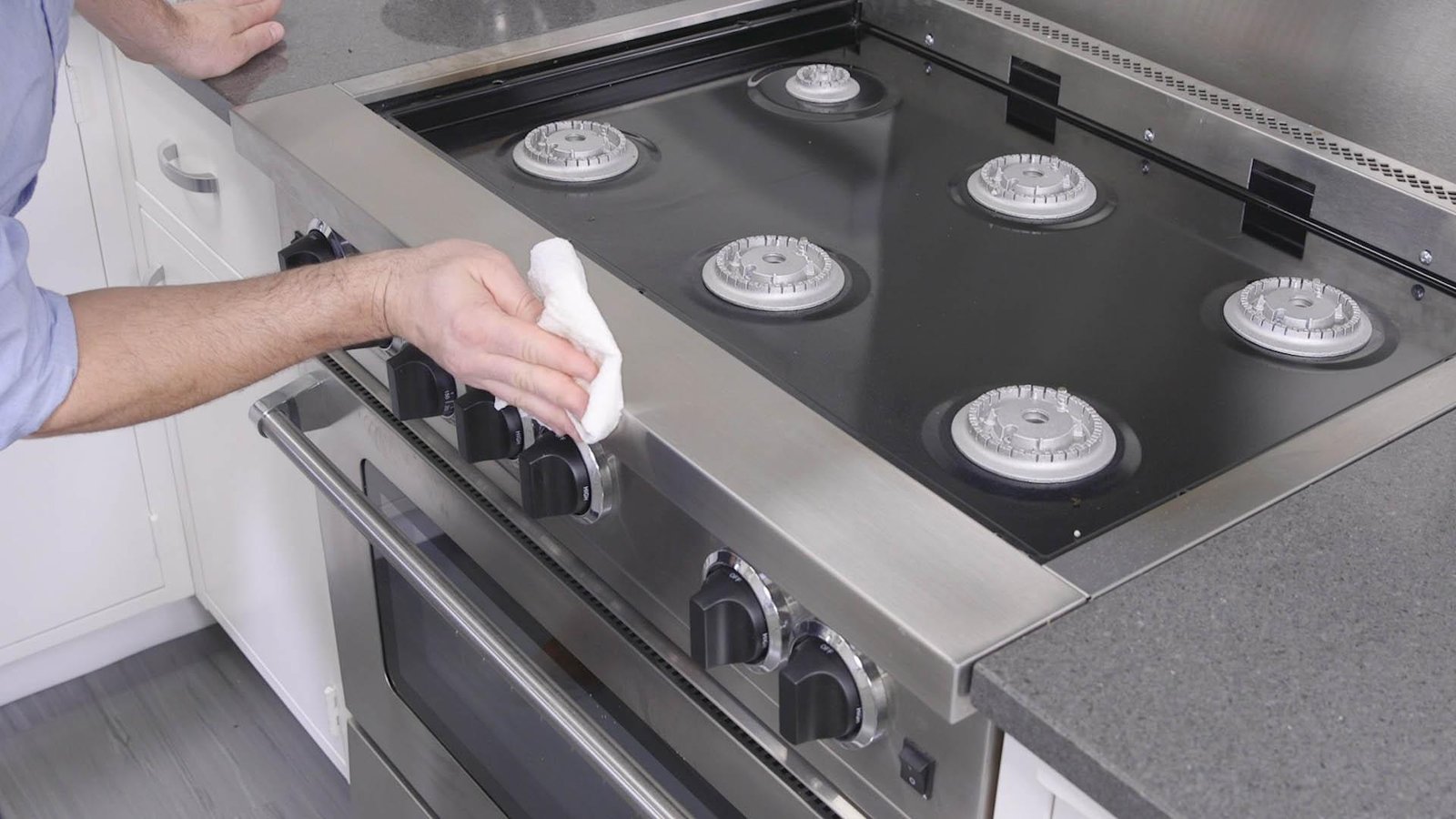Stove tops are a focal point in our kitchens, witnessing the daily hustle of cooking. However, over time, they accumulate grime and stubborn stains that can be challenging to remove. Fear not! In this comprehensive guide, we will explore the best ways to clean a dirty stove top without risking scratches or damage.
Importance of a Clean Stovetop

A clean stove top not only enhances the aesthetics of your kitchen but also ensures a healthy cooking environment. Grease buildup and stubborn stains can affect the efficiency of your stovetop, leading to uneven cooking and potential safety hazards.
Common Challenges in Cleaning Stovetops
Many individuals struggle with finding the right balance between effective cleaning and preventing scratches on their stovetops. This article will provide practical solutions to address these challenges.
Understanding Your Stovetop
Types of Stovetops
Before diving into cleaning methods, it’s crucial to understand the type of stovetop you have. Whether it’s ceramic, glass, stainless steel, or gas, each surface requires specific care to avoid damage.
Materials Used in Stove Top Surfaces
Different stovetop materials demand different cleaning approaches. Knowing the composition of your stove top surface is essential for selecting appropriate cleaning agents.
Preparing for Cleaning
Gather Necessary Supplies
Equip yourself with the right tools, including mild cleaning solutions, non-abrasive scrubbers, and microfiber cloths. Having everything at hand will streamline the cleaning process.
Safety Precautions

Safety first! Before starting the cleaning process, ensure the stovetop is completely cool to the touch to prevent burns. Additionally, ventilate the area if using cleaning agents with strong odors.
General Cleaning Tips
Gentle Cleaning Solutions
Opt for mild, non-abrasive cleaning solutions. A mixture of mild dish soap and water or a vinegar solution can work wonders without causing damage.
Proper Cleaning Tools
Choose cleaning tools that won’t scratch the surface. Microfiber cloths and soft-bristle brushes are excellent options for removing dirt and grime without harming your stovetop.
Avoiding Abrasive Materials
Steer clear of abrasive materials like steel wool or harsh scouring pads, as they can leave scratches and damage the stovetop surface.
Cleaning Specific Stove Top Surfaces
Ceramic and Glass Stovetops
For ceramic and glass surfaces, use a non-abrasive cleaner and a soft cloth. Gently scrub away stains and spills, avoiding excessive pressure.
Stainless Steel Stovetops
Stainless steel surfaces require special care. Use a stainless steel cleaner and a microfiber cloth to maintain a polished and scratch-free appearance.
Gas Stovetops
When dealing with gas stovetops, remove the grates and burner caps for a thorough cleaning. Clean the surface using a moist cloth and a gentle detergent.
Addressing Stubborn Stains
Common Stove Top Stains
Identify common stains like burnt-on food, grease, and watermarks. Tailor your cleaning approach based on the nature of the stain.
Effective Stain Removal Techniques
Utilize effective stain removal techniques such as baking soda paste for stubborn stains. Apply the paste, let it sit, and then gently scrub away the residue.
Maintenance Tips
Regular Cleaning Routine
Establish a regular cleaning routine to prevent the accumulation of tough stains. A quick wipe after each use can go a long way in maintaining a spotless stovetop.
Preventing Future Stains
Take preventive measures by using stove top covers or splatter guards. These accessories can significantly reduce the chances of spills and stains.
Troubleshooting Common Issues
Dealing with Burnt-On Residue
For burnt-on residue, soak the affected area with a mixture of water and vinegar. This will loosen the residue, making it easier to wipe away without scratching.
Handling Discoloration
Address discoloration by using a specialized stove top cleaner that is suitable for the specific material of your stovetop.
Eco-Friendly Cleaning Alternatives
Natural Cleaning Solutions
Explore eco-friendly cleaning alternatives such as using lemon juice, baking soda, or vinegar. These natural ingredients are effective and safe for the environment.
Environmentally Friendly Cleaning Tools
Opt for cleaning tools made from sustainable materials. Microfiber cloths and bamboo scrub brushes are excellent choices for an eco-friendly cleaning arsenal.
Tips for Long-Term Stovetop Care
Seasonal Deep Cleaning
Schedule seasonal deep cleaning sessions to address areas that may be neglected during regular cleaning. This ensures a thorough maintenance routine.
Protecting Your Stovetop from Damage
Take precautions to protect your stovetop from potential damage. Avoid dragging heavy cookware across the surface, and use trivets to prevent direct contact with hot pots and pans.
Advantages of a Clean Stovetop
Improved Efficiency
A clean stove top operates more efficiently, ensuring even heating and better cooking results. Say goodbye to unevenly cooked meals!
Prolonged Lifespan of the Appliance
Regular cleaning and maintenance contribute to the longevity of your stovetop. By preventing damage and wear, you extend the lifespan of this essential kitchen appliance.
Real-Life Cleaning Success Stories
User Testimonials
Read about real-life success stories from individuals who have effectively cleaned their stovetops using the methods outlined in this article.
Before-and-After Scenarios
Visualize the transformation of dirty stovetops into sparkling clean surfaces through compelling before-and-after images.
FAQs
How Often Should I Clean My Stovetop?
Regular cleaning is recommended, ideally after each use, to prevent the buildup of tough stains.
Can I Use Vinegar on All Stovetop Surfaces?
Vinegar is safe for most stovetop surfaces, but it’s essential to check the manufacturer’s guidelines for your specific appliance.
What is the Best Way to Remove Grease Buildup?
A mixture of dish soap and water, or a specialized degreaser, can effectively remove grease buildup without causing damage.
Are There DIY Cleaning Solutions for Stovetops?
Yes, many DIY solutions using common household items like baking soda, lemon juice, and vinegar can be highly effective.
How Do I Maintain a Polished Stainless Steel Stovetop?
Regularly wipe down with a stainless steel cleaner and microfiber cloth to maintain a polished appearance.
Conclusion
In conclusion, a clean stove top is not just a visual delight but also a key factor in ensuring efficient cooking and a longer appliance lifespan. By following the outlined cleaning tips and incorporating them into your routine, you can enjoy a spotless and well-maintained stovetop for years to come.

